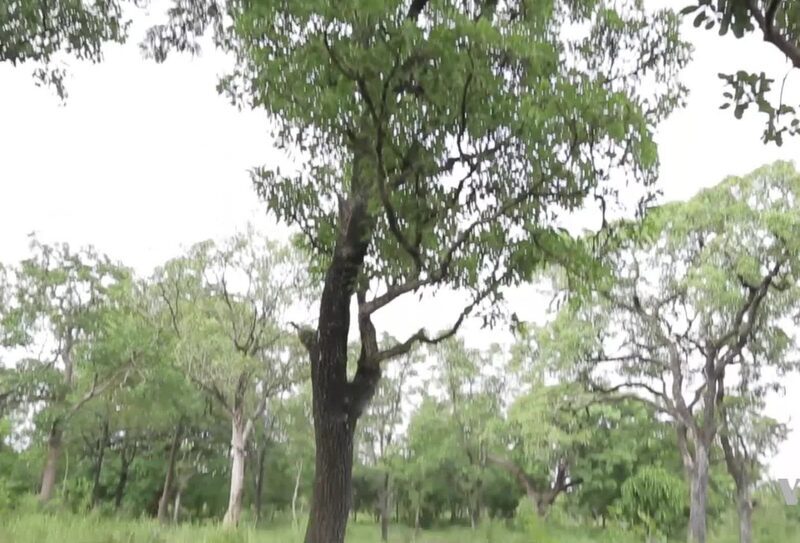
TPP to expand its activities to Saudi Arabia, UAE to promote innovative youth
The Potcast Productions Company (TPP), the leader in podcast production in the Middle East and ...

Ugandan former biology teacher and marathon runner Gerima Mustafa launched a 664-km walk from Kampala to Nairobi over 19 days to push for saving shea trees in Africa which are important for the ecosystem.
The walk is meant to raise awareness about the plight of shea trees in his home area of northwestern Uganda, in Sudan and in South Sudan.
Mustafa says the misuse of shea trees for charcoal and firewood “pricked his heart” and forced him to take a stand. He is worried they may become extinct.
He describes himself as “Commander-in-Chief of the Save The Shea Nut Movement”, and a campaigner who “walks the talk”. He wants to raise resources for a massive shea tree-planting campaign in Uganda and South Sudan.
The shea tree was once common in open grassland and woodland ecosystems spanning Africa’s dry belt from Somalia to Senegal.
The charcoal trade, stimulated by widespread poverty, youth unemployment and the need for cooking fuel in urban areas, is said to be the main driver of the shea tree’s demise in northern Uganda.
The slow-burning shea tree can be a big draw for charcoal traders, and many poor farmers willingly sell the trees for a song to cover costs like school fees, not realizing the long-term consequences.
However, shea trees have tremendous potential value, both in terms of the goods they produce and the ecosystem services they provide.
The trees are a source of fruit and oil—also known as shea butter—used for traditional cooking, skin care and medicine. Increasingly, it is exported or processed into skin care products, which can be found in shops around the world.
Shea trees can take 10 years to start bearing fruit but then can produce nuts for 200 years, though scientists from World Agroforestry say that the growth of new trees is hampered by mechanized agriculture which often destroys seedlings.
“Shea trees help retain moisture in the soil and thus support agriculture,” says Cathy Watson, Chief of Program Development at World Agroforestry.
“They are also a source of pollen for bees, food for birds and butterflies, and contribute to healthy ecosystems.”
While women tend to harvest the shea nuts, the trade in charcoal is driven by men who are not local residents, and the charcoal is destined for urban areas far away from where the trees are found, including across national borders.
“Women need shea, men need income,” says Watson.
And therein lies the problem and challenge. But it is also an opportunity for collective dialogue and solutions.
“We shouldn’t be afraid of tackling the drivers of land degradation and we must invest more in, and provide jobs for youth in, the nurturing of productive woodlands—avoided land degradation is also part of restoration,” says Frank Turyatunga, Deputy Director of the United Nations Environment Program (UNEP) Africa Regional Office. “Landscape restoration in Africa will be driven by the bottom line,” he adds.
“Knowledgeable, bold and charismatic people like Gerima Mustafa are fantastic ambassadors for their communities, country and for biodiversity in general,” says Musonda Mumba, UNEP landscape expert and current chair of the Global Partnership on Forests and Landscape Restoration.
“We need more such activists not only to save the shea tree but also the many other flora and fauna that make up the web of life on Earth on which we all, ultimately, depend for our survival and well-being.”
Nature-based solutions offer the best way to achieve human well-being, tackle climate change and protect our living planet. Yet nature is in crisis, as we are losing species at a rate 1,000 times greater than at any other time in recorded human history and one million species face extinction. In addition to important moments for decision makers, including the COP 15 on Biodiversity, the 2020 “super year” is a major opportunity to bring nature back from the brink. The future of humanity depends on action now.
The UN Decade on Ecosystem Restoration 2021–2030, led by the United Nations Environment Program, the Food and Agriculture Organization of the United Nations and partners such as the Africa Restoration 100 initiative, the Global Landscapes Forum and the International Union for the Conservation of Nature, covers terrestrial as well as coastal and marine ecosystems. A global call to action, it will draw together political support, scientific research and financial muscle to massively scale up restoration.
The Potcast Productions Company (TPP), the leader in podcast production in the Middle East and ...
Minister of International Cooperation Rania Mashat urged the international community to expand innovative financing tools ...
More than a third (36%) of senior leaders in the financial services sector use generative ...


اترك تعليقا